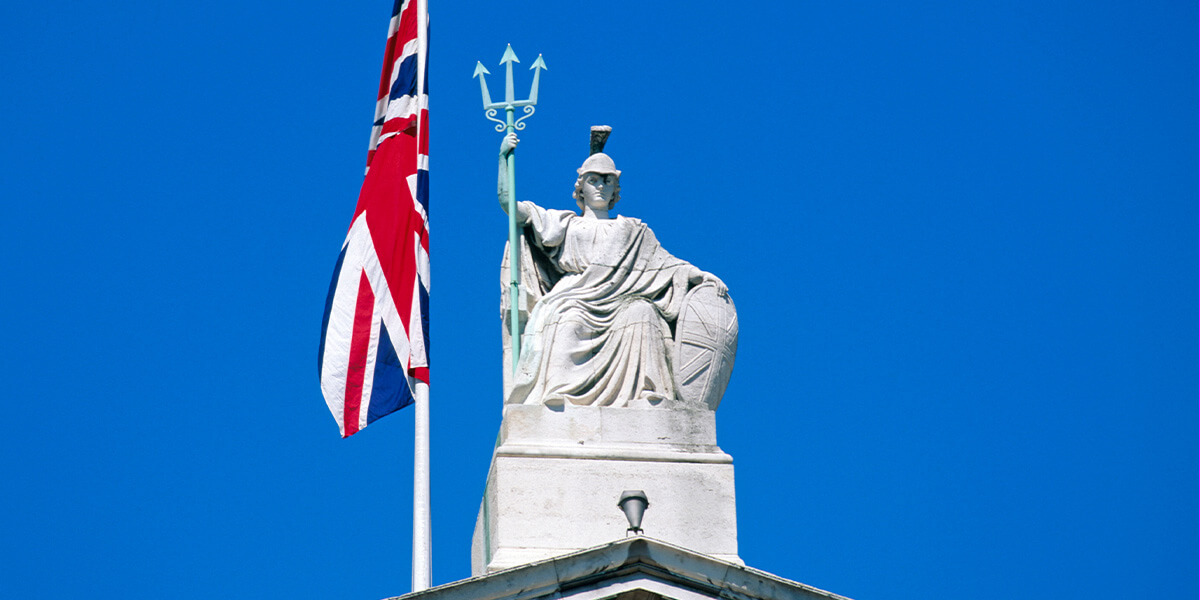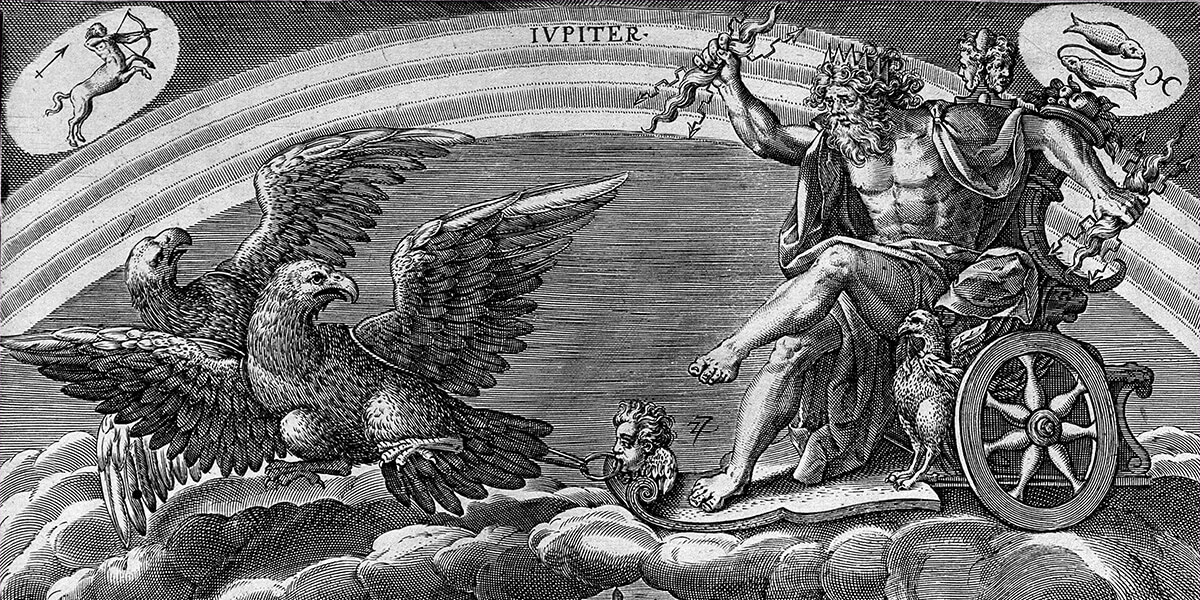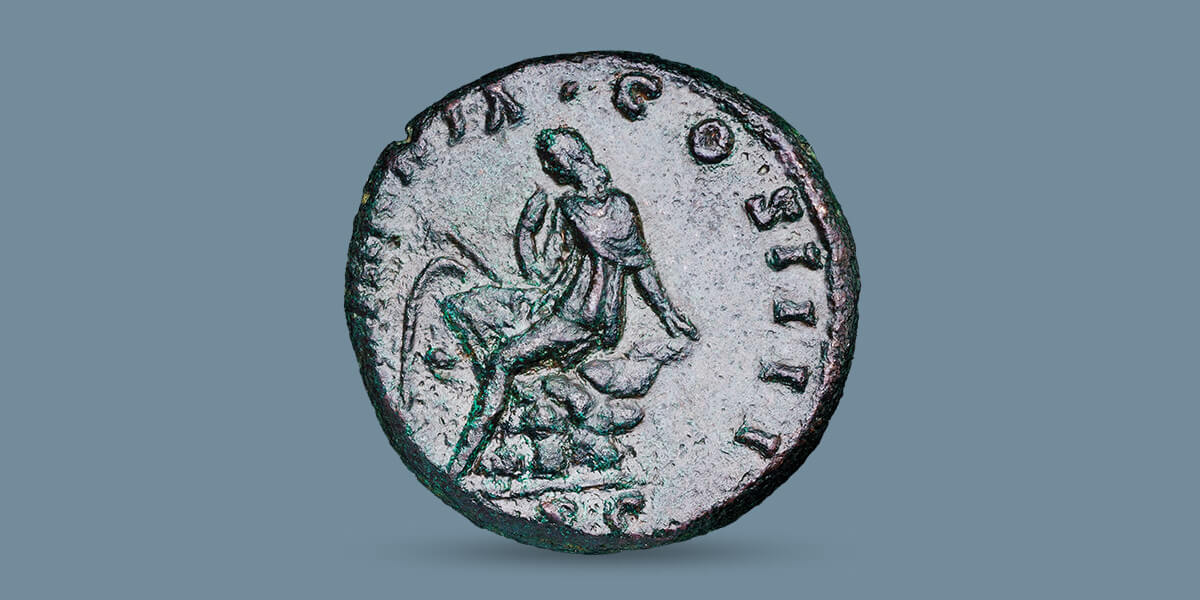Britannia, a legendary figure and an iconic emblem in the numismatic world, has featured on British coins since the reign of Charles II.
The figure perpetuates an ancient tradition of honouring gods, goddesses and mythical figures on coins. This article explores the origins of Britannia on coins and delves into the influence of ancient Greek and Roman mythology.

Gods, Goddesses and Heroes
A Parallel Mythology

Personifying Mythical Figures on Coins
In ancient Rome, it was common practice to honour significant figures on its coinage, a practice that remains largely similar today. The reverses of Roman coins often depict gods and goddesses, and Roma features heavily on Roman coinage.
In the second and first centuries BCE, Roma became the most popular image honoured on silver denarii, Rome’s principal silver coin. The Romans extended the practice of honouring deities or mythical figures on coinage throughout their conquered territories, with the figures appearing as female rather than male.
Symbols of Subjugation
The Romans viewed their conquered territories through the concept of ‘Otherness’, which juxtaposes the ‘Self’. ‘Otherness’ was regarded as female whereas the ‘Self’ was considered male and the Romans imposed female personifications onto the provinces they conquered. These female symbols represented the violence and control used for imperial expansion and often appeared on the coins of the subjugated nations.
This approach changed during the reign of Emperor Hadrian, who possessed a more peaceful mindset than his predecessors.

Timeless Britannia
Hadrian spent large parts of his reign travelling throughout the Roman Empire and visiting its conquered provinces. The emperor wanted to not only embrace these territories but also celebrate their contributions to the now peaceful empire, so he insisted on portraying the female personification of the nations through a more stable lens.
The symbol of Britannia came to feature on British coins as a figure of strength and resilience. First minted on coins of Hadrian’s Rome, the figure represented Roman Britain’s defensive policy. Despite the eventual wane of the Roman Empire, Britannia endured, and still embodies those same virtues of strength, resilience and fortitude today.
Be inspired

AN INTERVIEW WITH MARIE-ALICE HAREL
Discover Britannia 2024